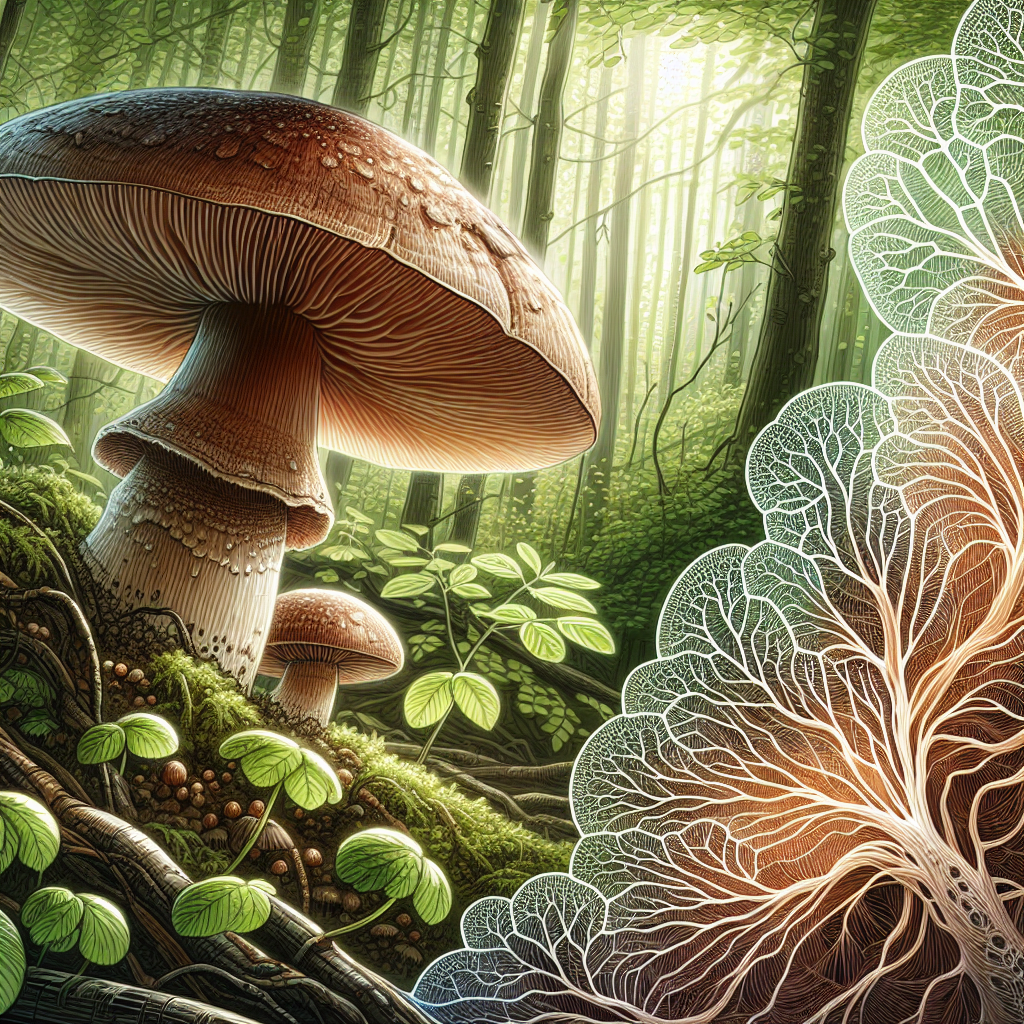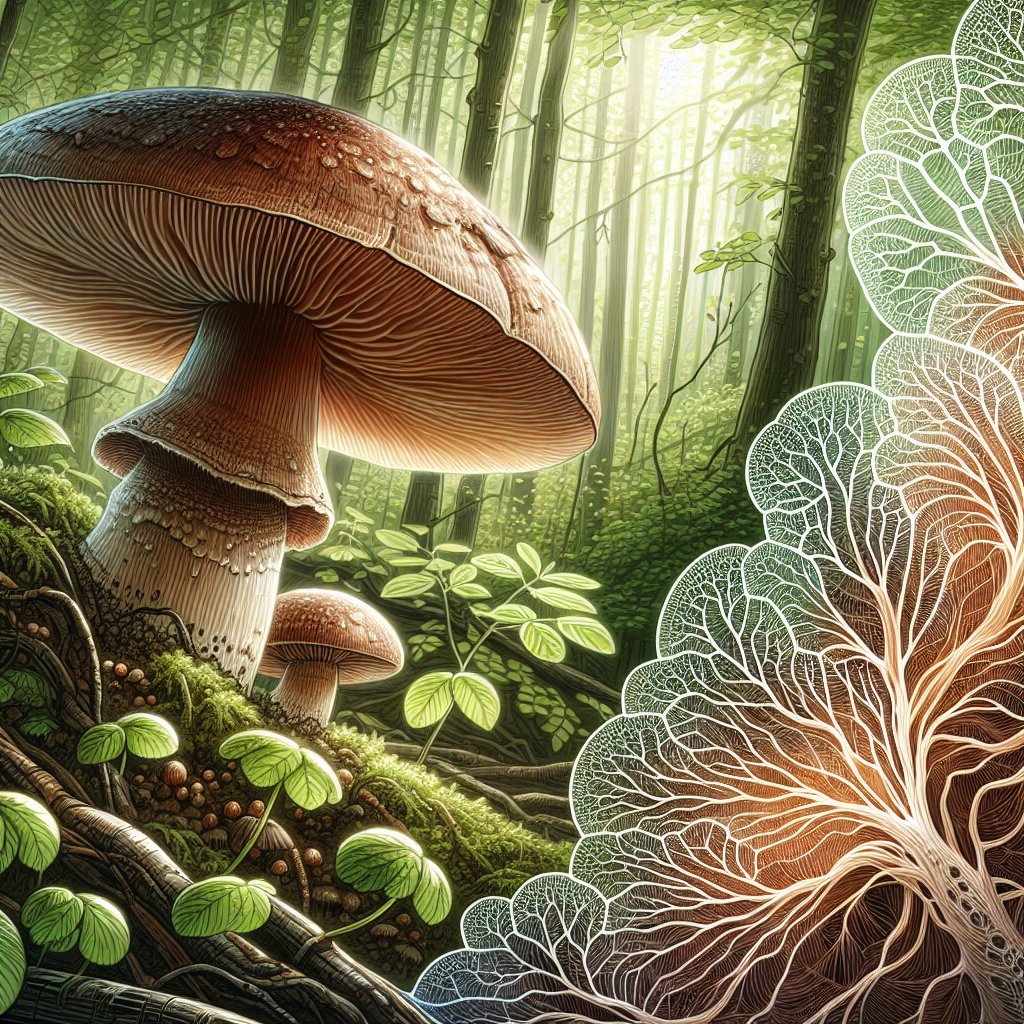In the world of fungi and mushroom cultivation, you may often hear the terms “Fruiting Body” and “Mycelium”. While these two may seem intricately linked, it is crucial to understand their differences as they play individual roles in the life cycle of a fungus. The article, “Understanding the Difference: Fruiting Body vs Mycelium” breaks down the characteristics, functions and importance of both, providing you with an extensive understanding of the fundamental elements of fungal growth – a knowledge that is essential for anyone interested in mycology or mushroom-based products.
Exploring the Basics of Fungi
Defining Fungi
Fungi is a group of eukaryotic organisms distinct from plants and animals, encompassing microorganisms such as yeasts and molds and the more familiar, macroscopic mushrooms. Fungi are fundamentally diverse, offering a wide array of shapes, sizes, colors, and ecological roles.
The role of Fungi in Ecosystems
Fungi play a crucial role in nearly every ecosystem, acting as decomposers, pathogens, symbionts, and even predators. As decomposers, they break down organic matter, recycling nutrients back into the ecosystem. Some fungi also form symbiotic relationships with other organisms, assisting in nutrient exchange, while others can be pathogens causing diseases in plants and animals.
General structure of Fungi
Generally speaking, a typical fungus is composed of a mass of thread-like structures called hyphae. These hyphae collectively make up a Mycelium, essentially the vegetative part of the fungus. Some fungi, like mushrooms, also produce a reproductive structure called a fruiting body, carrying spores that allow the fungus to reproduce and spread.
Understanding Mycelium
Definition of Mycelium
Mycelium refers to the vast, thread-like network of hyphae that forms the main body of a fungus. This is in stark contrast to plants and animals, where the organisms are visibly present while the fungi remain hidden underground or inside a substrate, with only the fruiting body visible above the surface.
Structure and Composition of Mycelium
Mycelium consists of a complex web of interconnected hyphae. Each hypha is essentially a long, thin tube filled with cytoplasm and multiple nuclei. The hyphal network is encased in a cell wall primarily composed of chitin, which provides structure and protects the cell contents.
Function and Importance of Mycelium
The mycelium serves multiple functions for the fungus. Through the extensive hyphal network, the mycelium absorbs nutrients from the surrounding environment. Furthermore, the mycelium is the site for fungal growth and ultimately expands to initiate the formation of fruiting bodies during reproduction.
Growth Cycle of Mycelium
Initial Growth Phase of Mycelium
The growth cycle of mycelium begins from a single fungal spore or a fragment of hypha. Given the right conditions, the spore germinates and starts to grow, extending hyphae in multiple directions to establish a new mycelium.
Medium and Nutrient Requirements of Mycelium
Mycelium thrives in a wide range of mediums, from soil and decaying matter to living organisms. The specific nutrient requirements can vary, but typically fungi require sources of carbon, nitrogen, and water for hyphal growth.
Mycelium Colonization
Once the mycelium is established, it proceeds to colonize the entire substrate, absorbing nutrients as it grows and expands. This phase also sets the stage for the formation of the fruiting body.

Industrial and Medicinal Uses of Mycelium
Mycelium in Textile Industry
In the textile industry, mycelium is viewed as a sustainable alternative to traditional materials. It can be grown into a variety of forms, including leather-like material, offering a renewable, biodegradable, and cruelty-free option.
Mycelium in Food Industry
In the food industry, mycelium is used in the production of several products, including tempeh and certain types of cheese. Additionally, it’s being researched as a potential meat substitute due to its firm, chewy texture.
Medicinal Properties of Mycelium
Mycelium also possesses various medicinal properties. Some species produce metabolites that have been used in traditional medicine for centuries and are being increasingly recognized for their potential in modern pharmacology.
Understanding Fruiting Body
Definition of Fruiting Body
A fruiting body, conventionally seen as the mushroom we recognize, is the reproductive structure in many fungi. It is a structurally complex, multicellular entity grown from the mycelium under appropriate environmental conditions.
Structure and Composition of Fruiting Body
A fruiting body consists of a complex structure designed to produce and disperse spores. Its composition includes the cap or pileus, the gills or lamellae underneath, and the stalk or stipe that supports the cap.
Function and Importance of Fruiting Body
The fundamental function of the fruiting body is reproduction, housing the production and dispersal of spores. However, they also play a more visible role in interacting with the environment, acting as a point of contact between the mostly hidden fungus and the rest of the world.
Growth Cycle of Fruiting Body
Initial Formation of the Fruiting Body
The formation of the fruiting body starts within the mycelium when specific environmental conditions are met, triggering the assembly process. This process is species-specific and relatively complex, involving significant cellular coordination and reorganization.
Maturation of the Fruiting Body
After initial formation, the fruiting body develops and matures, growing in size and complexity. Mature fruiting bodies are a visual spectacle, emerging from the hidden mycelium to present a variety of shapes, colors, and sizes.
Reproductive Function of Fruiting Bodies
At maturation, the fruiting body shifts to its reproductive phase. Spores are generated, often in vast numbers, and then ultimately released into the environment for dispersal, marking the end of the growth cycle but a new beginning for the fungus’s spread.
Industrial and Medicinal Uses of Fruiting Bodies
Fruiting Bodies in Food Industry
Fruiting bodies, particularly mushrooms, have been valued as food sources across cultures for centuries due to their unique flavor profiles and textures. They’re also gaining recognition for their nutritional and potential medicinal value.
Medicinal Properties of Fruiting Bodies
Several species of fungi have been used traditionally for their healing properties, with the fruiting bodies often being the part used. Today, various compounds of medicinal interest have been isolated from fruiting bodies, including antioxidants, antimicrobials, and immunomodulators.
Fruiting Bodies as a Source of Natural Dyes
Fruiting bodies of some fungi species have found a niche use as natural dyes. They produce pigments that can be extracted and used to dye textiles and other materials, offering an eco-friendly alternative to synthetic dyes.
Comparing Mycelium and Fruiting Body
Differences in Structure
While both mycelium and fruiting bodies are components of the same organism, they are structurally different. Mycelium is composed of a network of hyphae, whereas a fruiting body is a more complex and organized structure developed from this network.
Differences in Function
The function of mycelium primarily involves growth and nutrient absorption, while the fruiting body is dedicated to reproduction and spore dissemination.
Differences in Industrial Use
Industry-wise, mycelium is being explored mainly for its potential role in sustainable textiles and food production. Fruiting bodies, on the other hand, have established roles in the food industry and increasing relevance in the medicinal field.
Understanding the Importance of Fungal Life cycle
From Mycelium to Fruiting Body
The fungal life cycle, from the growth of the mycelium to the formation of fruiting bodies, is a complex process that ensures the survival and propagation of the species. This interplay between growth phases, triggered by varying environmental conditions, ultimately sustains the unique functioning of fungi in nature.
Spore Release and Reproduction
The release of spores from the fruiting body is a critical step in the fungal life cycle. It enables fungi to colonize new locations and also contributes to genetic diversity, which is key to adaptability and survival over time.
Survival Strategies of Fungi
Fungi’s survival strategies extend beyond their unique life cycle. Their ability to form enduring spores and resistant mycelial structures lets them wait out unfavorable conditions, while their diverse metabolic capabilities enable them to colonize a wide array of habitats.
Preservation and Cultivation Methods
Methods to preserve Mycelium
Preservation of mycelium often involves storing it under controlled conditions, in mediums such as agar slants or grain spawn. These methods aim to maintain the viability and growth potential of the mycelium for future use.
Cultivating Fruiting Bodies for Commercial Use
The cultivation of fruiting bodies, specifically mushrooms, has been perfected over centuries. Methods vary among species but typically involve controlled environments which provide optimal conditions for mycelial growth and subsequent fruiting body formation.
Challenges in Fungal Cultivation
Despite advancements, fungal cultivation still poses challenges. These include managing the risk of contamination, ensuring ideal growth conditions, and understanding species-specific requirements. Ongoing research efforts, however, continuously aim to streamline and enhance these processes.
